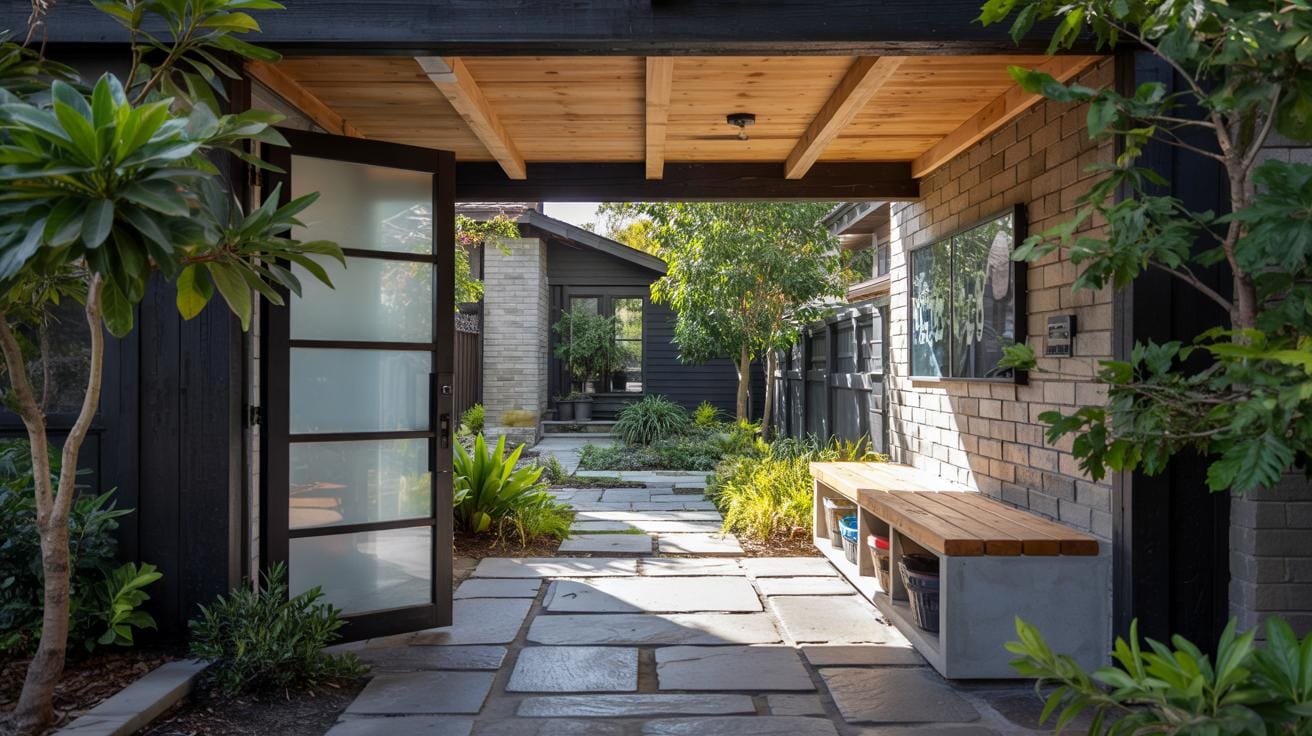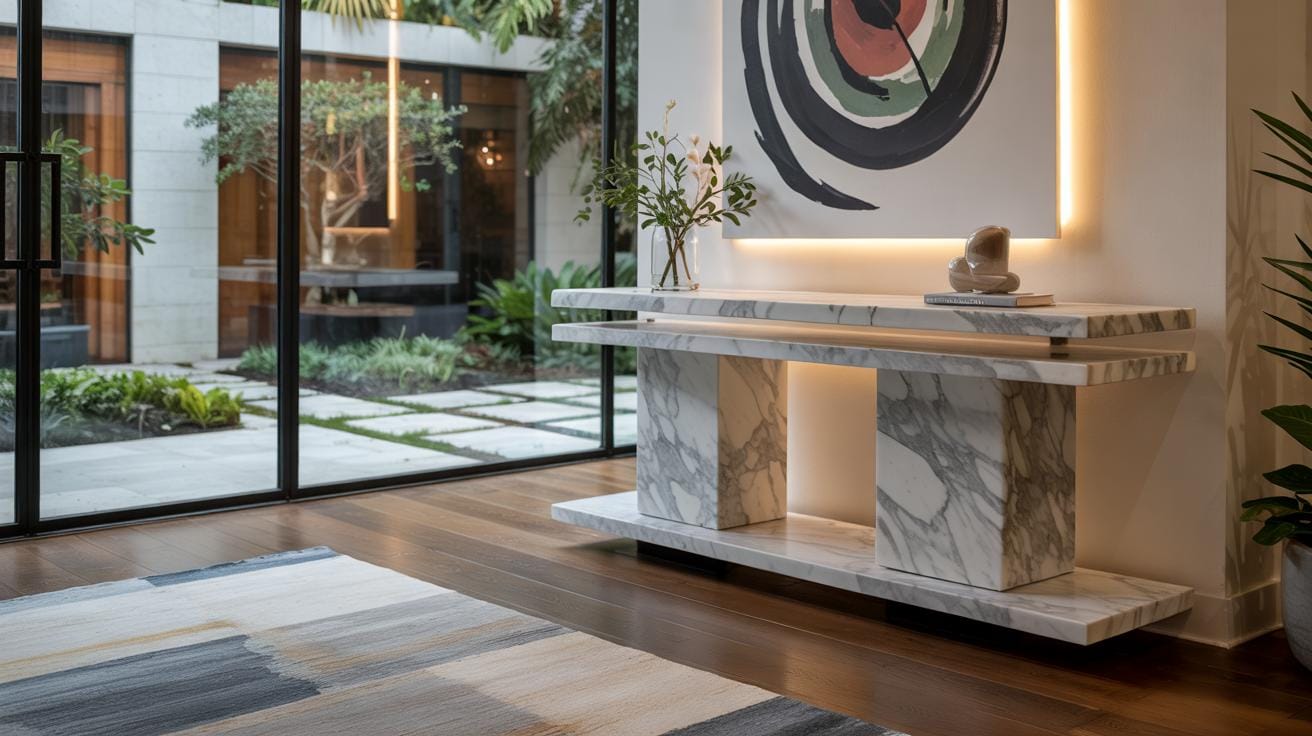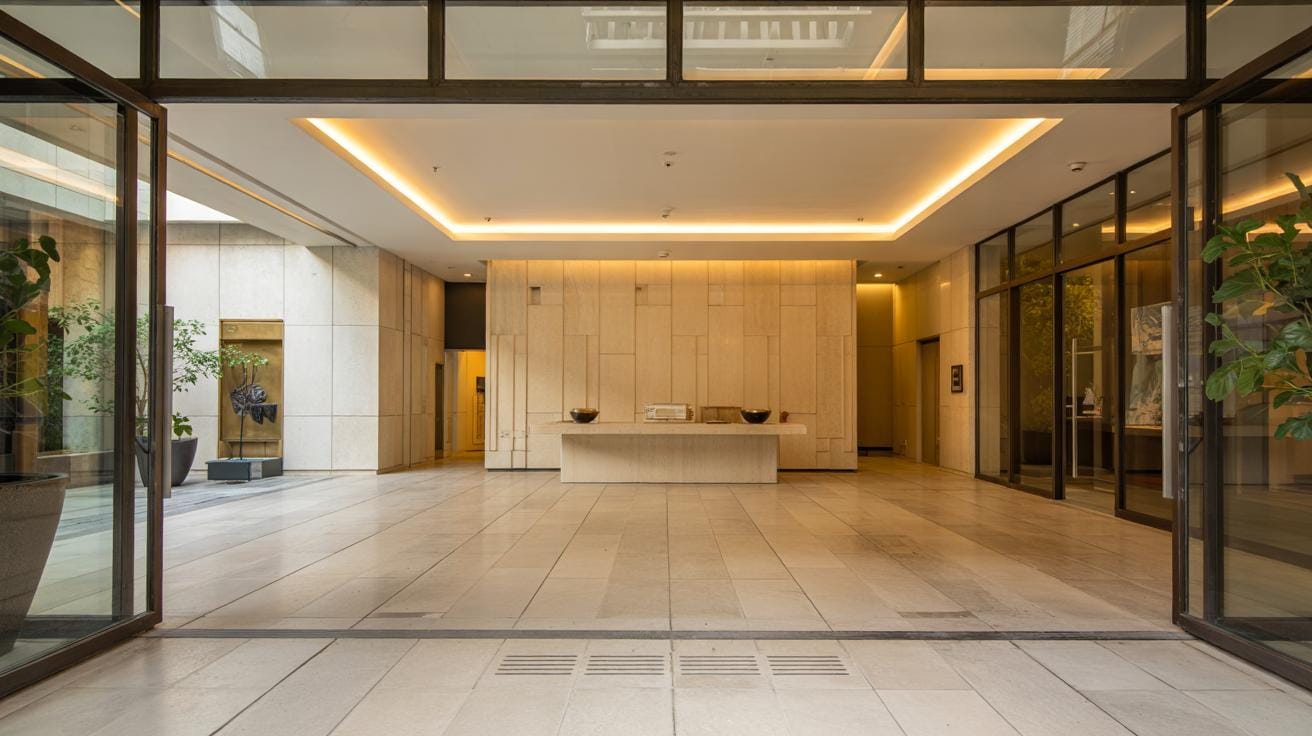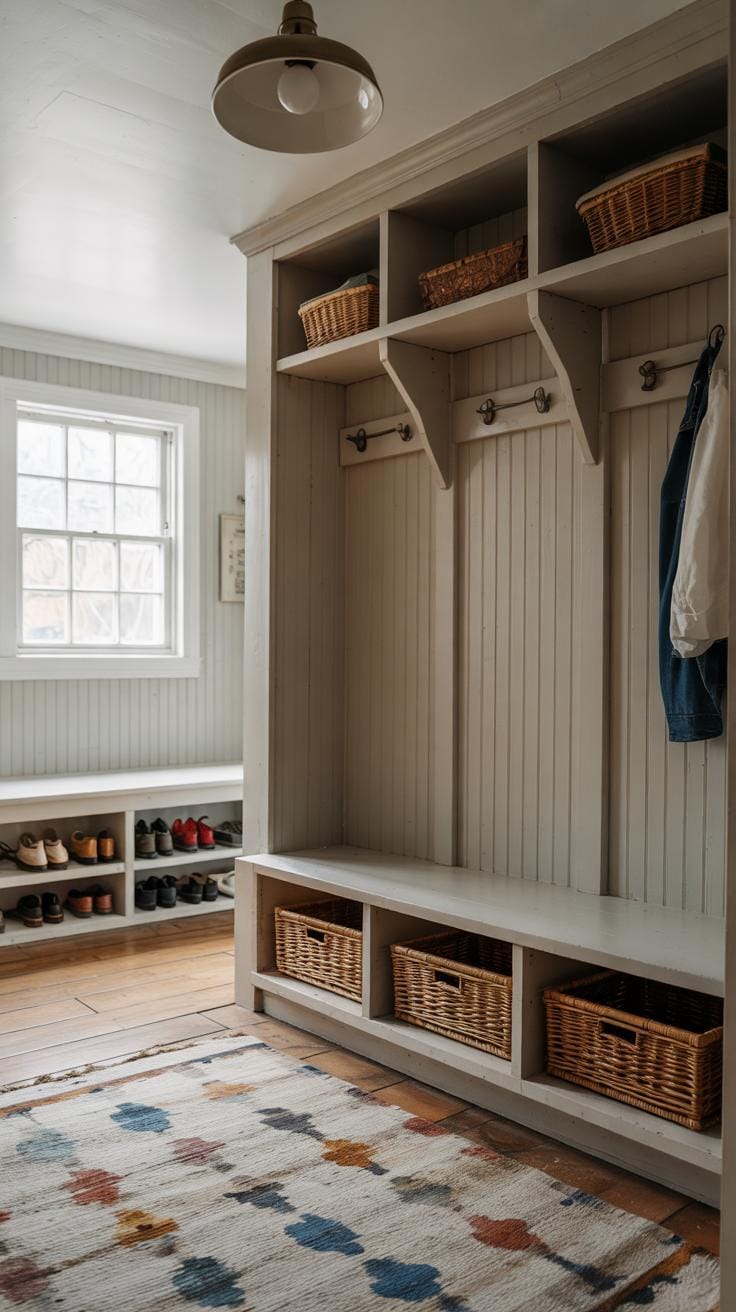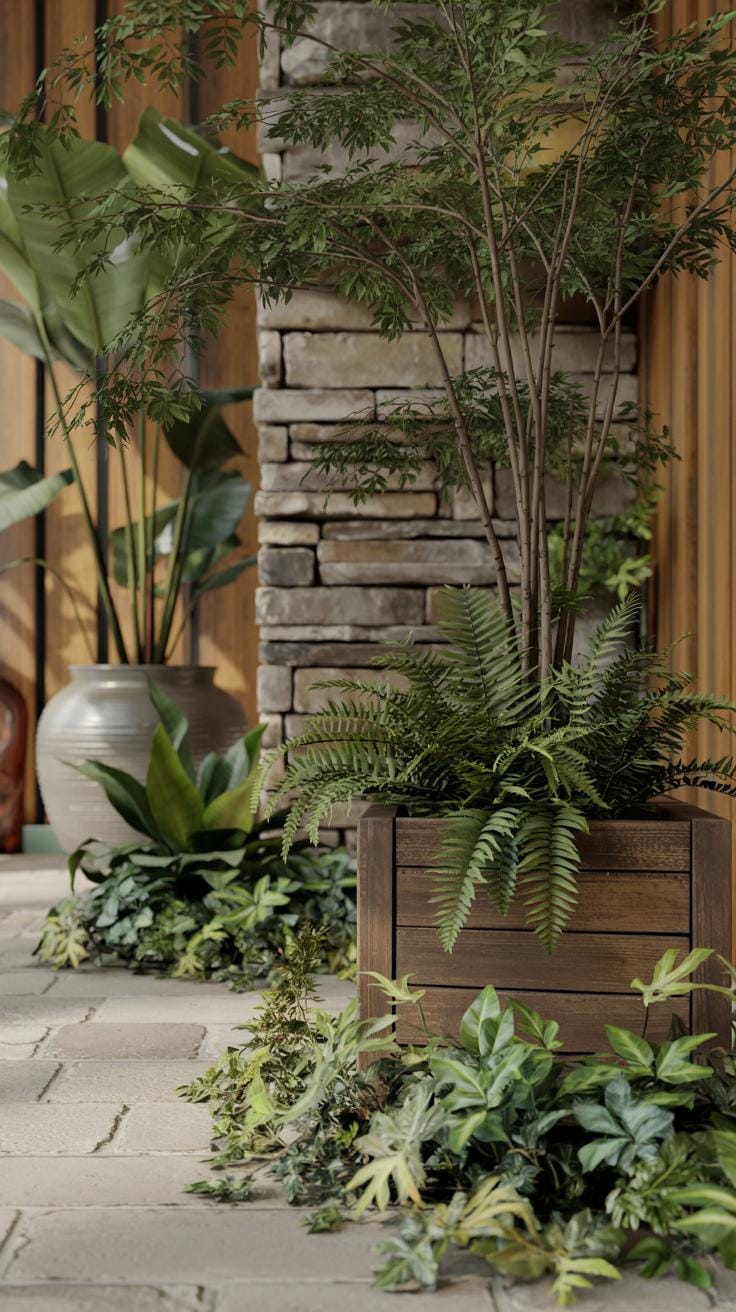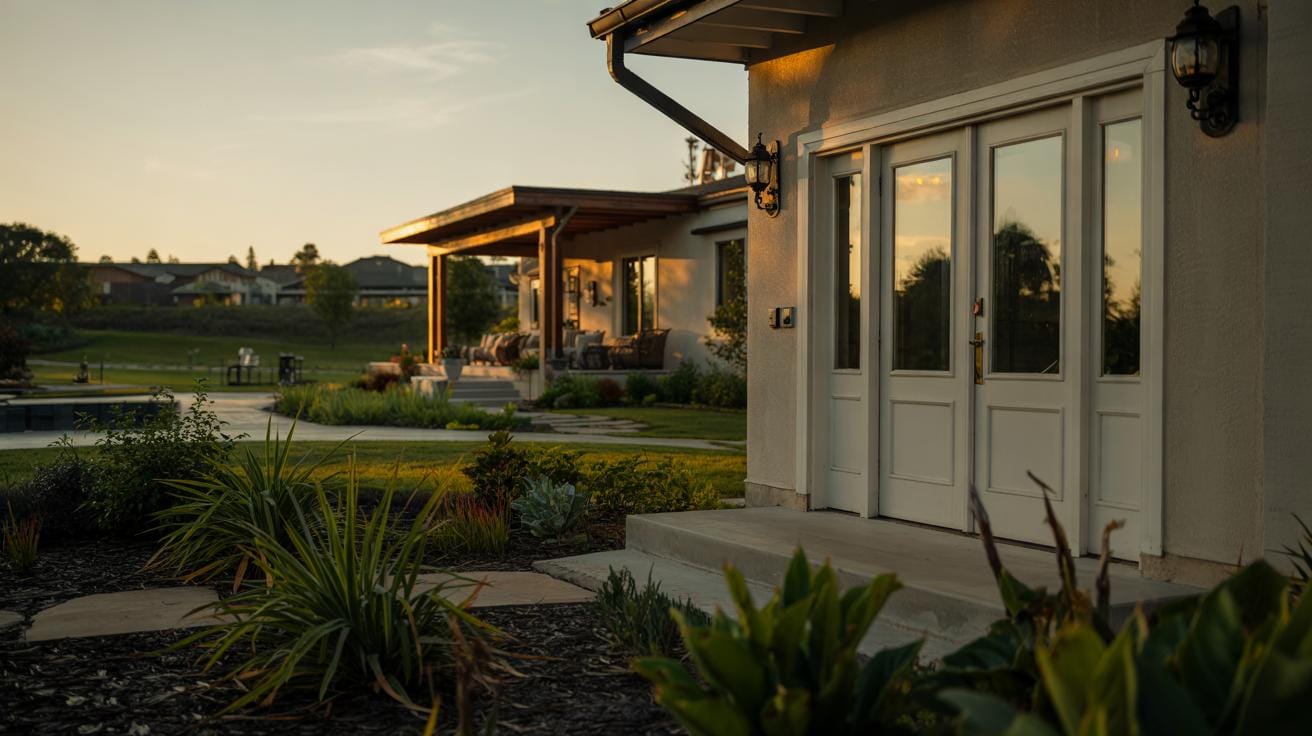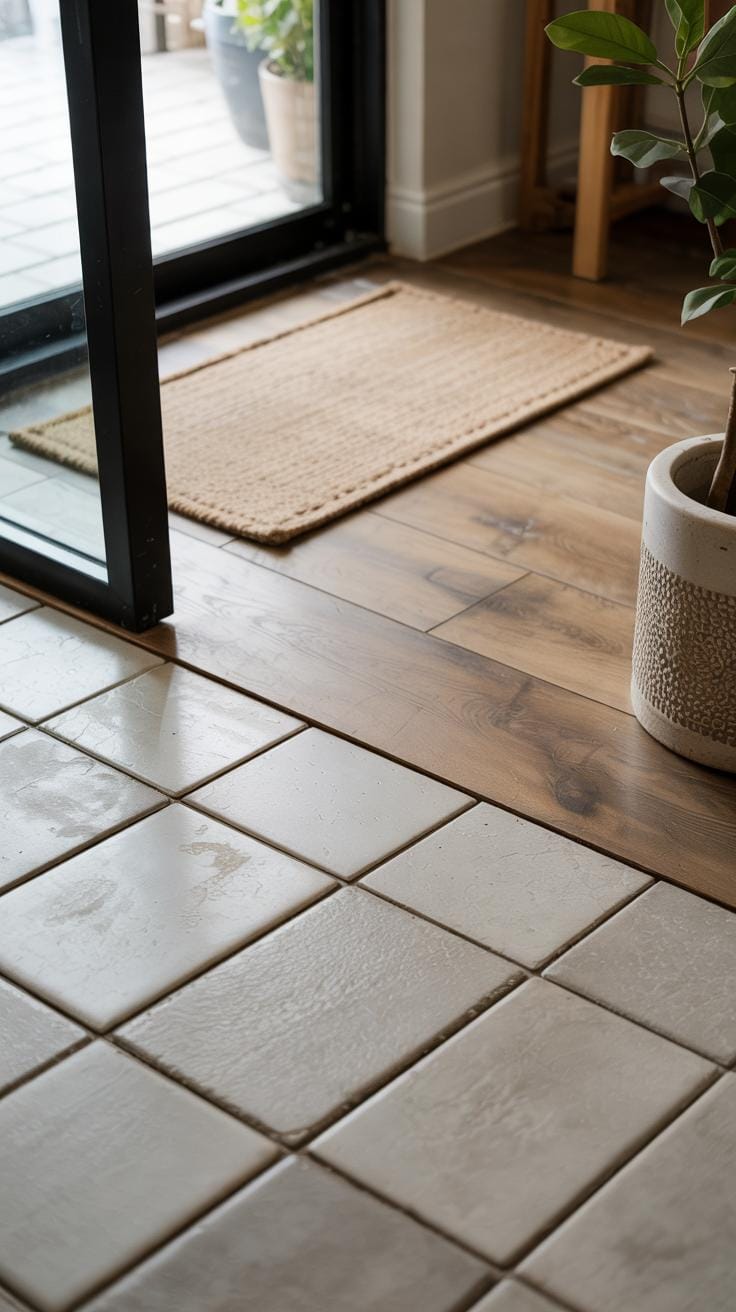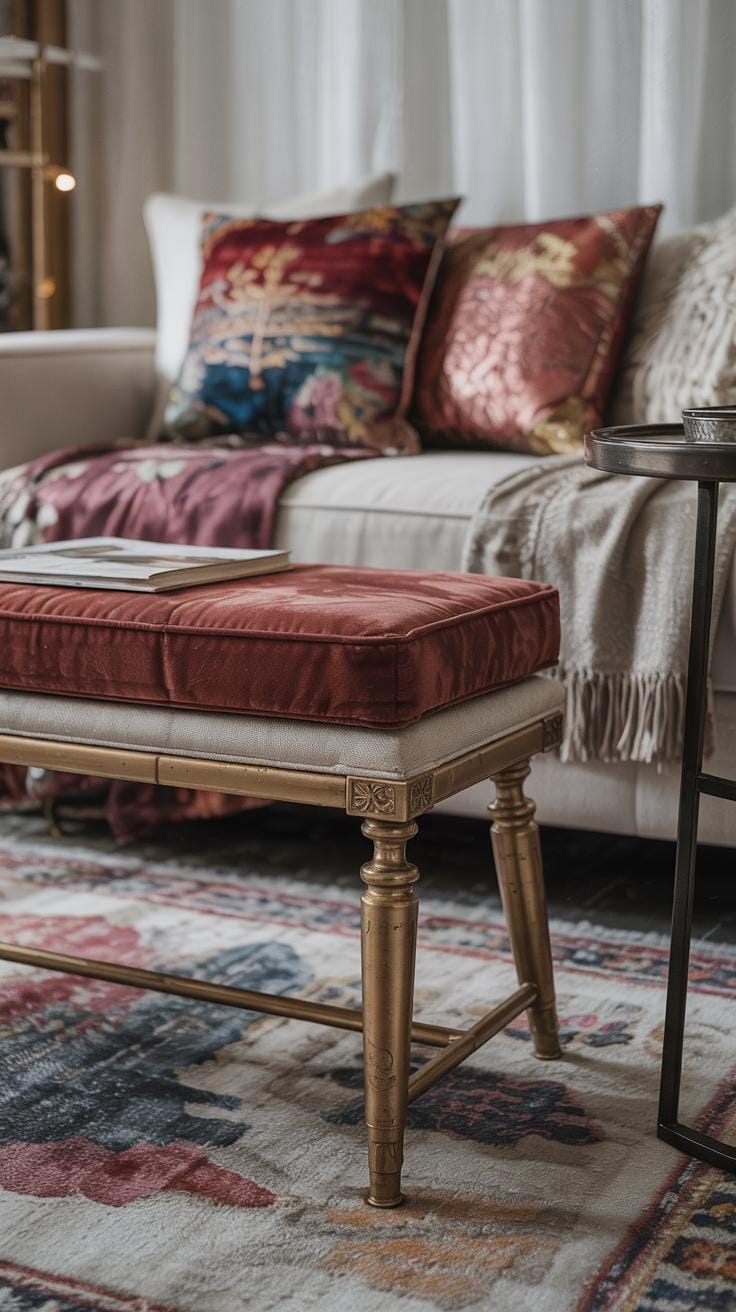Introduction
Designing your home entrance is about combining style and practicality to create a welcoming space. Your front entrance sets the tone for your entire home. It should look appealing while serving everyday needs effectively. A well-thought-out entrance can make your home feel inviting and organized. Consider how design elements and functional choices work together to enhance your space.
Many homeowners focus either on looks or utility but balancing both creates a better experience. How can you improve your entryway to meet your lifestyle? This article provides ideas that cater to both form and function. You will find practical ways to create an entrance that works well daily and impresses guests. Each chapter guides you through different aspects of home entrance design for an ideal blend of beauty and purpose.
Choosing the Right Door Design
Choosing the right door design is key to blending style and practicality at your home’s entrance. Your door sets the tone for the entire house. It needs to fit the look of your exterior while serving daily needs.
Select door materials carefully. Each offers different benefits for durability, security, and maintenance. Think about how often you use the door and what kind of weather it will face. A sturdy door protects your family and belongings but should also invite guests in.
Styles vary from sleek modern panels to classic raised designs. Match your door to architectural features for a unified look. Consider how colors and finishes affect curb appeal. Imagine visitors arriving—does your door welcome them with charm and function?
How do you balance attractiveness with usability? Look for doors that open smoothly, withstand wear, and include secure locking systems. Your choice can boost your home’s value and everyday comfort.
Materials That Combine Durability and Style
Wood doors offer natural beauty and warmth. They work well in dry climates but need regular upkeep to avoid warping or rotting where humidity is high. Wood suits traditional or rustic homes best.
Steel doors provide strength and resist dents or weather damage. These are ideal for security and harsh climates. Though they lack natural texture, steel doors can be finished with paint or coatings to mimic wood grain or bold colors.
Fiberglass doors combine durability with low maintenance. They resist moisture, cracks, and fading, making them a good pick if your area faces varying weather. Fiberglass doors come in many styles and paint options that fit both classic and modern homes.
Match materials to your needs and climate. For example, use steel in cold, windy areas or fiberglass where humidity fluctuates. Think about your security concerns and curb appeal goals when picking a material.
Security Features Without Sacrificing Looks
Security is essential, but it shouldn’t spoil your door’s appearance. Reinforced locks strengthen your door’s resistance to forced entry. These often hide inside the door frame so they don’t alter the look.
Smart locks offer keyless entry and remote controls. They blend into the door hardware without bulky fixes. You gain convenience without drawing attention to security systems.
Peepholes help identify visitors safely. Modern peepholes include wide-angle views and even camera options. They stay subtle and can be painted to match the door color, maintaining a clean exterior.
Secure features integrate smoothly when you choose hardware that fits your door’s style. Ask yourself: can you improve safety without changing your door’s character? Pick options that offer protection discreetly.
Entryway Lighting for Safety and Ambiance
Lighting plays a key role in your home entrance, covering both safety and atmosphere. Bright lights help you see steps and thresholds clearly, reducing trips and falls. They also keep unwanted visitors away by illuminating dark corners.
Creating a warm, welcoming mood is just as important. Using a mix of lighting types prevents harsh shadows and creates depth. Motion sensors turn lights on only when needed, saving energy and adding convenience. Imagine arriving home at night with lights automatically guiding your way.
Layered lighting means combining overhead fixtures, wall sconces, and pathway lights to meet different needs. This approach keeps your entrance functional and attractive at all hours. What lighting setup would make your entry both secure and inviting? Carefully balancing these elements helps your home entrance succeed on every level.
Types of Lighting to Highlight the Entrance
Each lighting type serves a clear purpose at your entryway. Wall sconces on either side of the door provide even illumination and enhance curb appeal. They can frame your entrance and add character without overwhelming the space.
Overhead lights, such as pendant fixtures or recessed lighting, deliver broad coverage to brighten the entire doorway. They make it easier to unlock doors and spot packages left by the front step.
Pathway lighting shines along walkways and steps, guiding guests safely after dark. Small stake lights or low-voltage LED strips work well here. Together, these lighting options create layers that improve safety and highlight architectural details. Which type fits your entrance’s style and needs best?
Energy-Efficient Lighting Choices
Switching to energy-saving lighting helps reduce your electricity bills without sacrificing brightness. LED bulbs use 75% less power than traditional incandescent bulbs and last much longer, cutting replacement costs.
Solar-powered fixtures offer a practical solution when hardwiring isn’t possible. They charge during the day and light up your path at night without drawing from the grid. These lights often include motion sensors, turning on only when movement is detected.
Choosing energy-efficient lights supports your budget and the environment. What if your entryway could stay bright, safe, and cost-effective year-round? Investing in these lighting options answers that question well.
Functional Storage Solutions at the Entrance
Your entrance sets the tone for your home. Keeping it tidy helps you feel organized and relaxed the moment you step inside. Adding storage that blends with the style of your entryway makes a big difference. Shoe racks prevent clutter by grouping footwear in one place. Wall hooks give a spot for coats and bags without taking up space. Benches with hidden storage add a seat for putting on shoes while offering a place to tuck away items. If you want a sleeker look, built-in cabinets deliver ample storage and keep the area streamlined.
How often do you find yourself scrambling to grab keys or shoes before heading out? When storage solutions are placed thoughtfully, your entrance becomes a hub of efficiency. Choose options that fit your space and daily habits. This balance of form and function makes your home entrance practical and welcoming.
Maximizing Small Spaces with Clever Storage
Small entrances don’t have to feel cramped or messy. Vertical storage uses the often-unused wall space, freeing up floors for movement. Add tall shelves or narrow cabinets to hold essentials. Hooks placed high can hold bags or hats without crowding the floor. Multi-purpose furniture works well too. A slim bench with storage inside gives seating plus space for shoes or scarves.
When space is tight, every inch matters. Consider stacking baskets or using pegboards to customize storage. Think about how you move through the entrance and store items where they make sense. What if a small wall-mounted organizer could hold your mail and keys in one spot? Clever choices turn limited space into a smart, functional zone.
Organizing Essentials for Easy Access
Keys, mail, and shoes often cause clutter right at the door. Creating a dedicated system keeps these items in check. A small tray or bowl by the door catches keys so you never lose them. Vertical mail slots keep papers off surfaces and easy to find. Shoe cubbies or racks keep your footwear grouped and off the floor.
Choosing accessible spots for essentials speeds up your daily routine. When everything has its place, leaving or returning home flows without frustration. Does your current setup make it easy to grab what you need? Organizing with intention cuts down on frantic searches and makes your entrance functional and calm.
Incorporating Natural Elements
Your entrance sets the tone for your home, so adding natural elements can create a warm, fresh feel while keeping the space functional. Plants bring life and color without overwhelming the area. They cleanse the air and can make waiting by the door more pleasant. Natural materials like wood, stone, and woven fabrics add texture and durability. You might choose a wooden bench that doubles as storage or a stone planter to anchor the space. These materials hold up to weather and daily use better than many synthetic options. How can you balance nature’s calm with the entrance’s practical needs? Consider materials and plants that suit your lifestyle and climate. A natural, inviting entryway welcomes visitors and supports everyday routines in one thoughtful design.
Choosing Plants That Thrive Near Entrances
Select plants that handle varying light near entryways and need little care. For outdoors, hardy options like succulents, lavender, or snake plants offer easy upkeep and handle sun or shade. Indoors, pothos, ZZ plants, and spider plants tolerate low light and irregular watering well. These plants stay healthy even if you forget to water them for a few days. Group small pots on shelves or place one large plant nearby to create a natural focal point. Think about your specific light—north-facing doors get less sun, so choose shade-friendly species. Would a small herb garden near your front door fit your taste and routine? Choosing the right plants keeps your entrance lively and stress-free.
Using Natural Materials in Entryway Decor
Incorporate wood, stone, and woven fabrics to enhance your entryway’s natural look. A wooden bench or table adds warmth and can provide a place to sit or drop keys. Stone planters are sturdy and weather-resistant, blending well with both modern and rustic styles. Woven fiber mats or baskets offer texture and trap dirt or moisture, helping keep the space clean. These materials work well together and wear well over time. For example, a wooden bench with a woven cushion near a stone planter filled with greenery creates layers of natural elements. How could you swap synthetic for natural materials to improve your entrance’s feel and function? Simple changes can make your entry both inviting and tough enough for daily use.
Creating Clear and Inviting Pathways
Your pathway sets the tone for your home entrance. It should guide visitors smoothly to your door while adding charm to the exterior. Choose a layout that leads naturally without sudden turns or confusing splits. Straight or gently curved paths work best to keep guests comfortable and oriented.
Consider how your pathway fits with the home’s style and the surrounding landscape. A narrow path may suit a quaint cottage, while a wider path feels welcoming on larger properties. Clear edges and subtle lighting help define the way, making it easier to navigate, especially at night.
The choice of materials plays a key role. Combining textures can add visual interest but should not create tripping hazards. Think about how water will flow off the surface to avoid puddles or slippery spots. How can your pathway invite arrival while serving practical needs?
Material Choices for Durable Walkways
Brick offers classic charm and long-lasting strength. It performs well in temperate climates but may crack under severe freeze-thaw cycles. Concrete provides a versatile and smooth surface, good for signage or wheelchair access, though it can stain easily and look plain unless stamped or colored.
Gravel gives a natural feel and excellent drainage but requires upkeep to stay even. In wet climates, gravel may shift or wash away. Pavers come in various shapes and colors, letting you create patterns that suit your style, but they can be costly and take more time to install.
Consider your local weather and maintenance commitment. The right materials will hold up while complementing your home’s architecture. What balance between care and beauty fits your lifestyle?
Designing Pathways for Smooth Flow
Shape your path to match how people naturally move toward your entrance. Avoid sharp turns that force awkward steps. Aim for gentle curves or straight lines that feel inviting and easy to walk. Place wider sections near the door or seating areas to allow pause or two-way traffic.
Keep the surface even and clear of obstacles. Incorporate slight slopes or ramps where needed to ensure safety for all ages and abilities. Think about how rain, snow, or leaves might affect footing. Slipping is a concern when surfaces are too smooth or narrow.
Imagine walking your path at dusk. Would you feel welcome and steady? Adjust angles and width until your pathway invites visitors without hesitation. How does your design support a safe and relaxed arrival experience?
Choosing Stylish and Durable Flooring
Your entryway flooring must handle daily wear while supporting your home’s look. Tiles offer strong durability. Porcelain and ceramic tiles resist water, scratches, and heavy foot traffic. They come in many styles, from natural stone looks to modern geometric shapes, allowing you to match your style without losing functionality.
Wood flooring adds warmth but requires treatment to resist moisture and dirt commonly found near entrances. Engineered hardwood can be a practical option, blending natural beauty with increased durability.
Composite materials, such as luxury vinyl planks or tiles, combine the appeal of wood or stone with strong wear resistance and easy maintenance. They also handle moisture better than traditional wood.
Choosing flooring that balances style with strength sets a solid foundation for an inviting and practical entryway.
Flooring Materials That Withstand Traffic
Entryways face heavy foot traffic and dirt daily. Materials you pick should resist stains and wear without needing constant upkeep. Porcelain tiles resist scratches and don’t absorb moisture easily, making them ideal near doorways.
Laminate flooring with an abrasion-resistant finish can also hold up to busy entrances while staying budget-friendly.
Among hardwoods, oak and maple show strong resistance to dents and wear, especially if sealed properly. Composite flooring often features a tough wear layer that simplifies cleaning and resists fading.
Ask yourself: how much traffic will your entry get? Choosing materials with high durability ratings means your floor stays attractive longer with less effort.
Design Patterns That Enhance the Space
Your floor can create a welcoming feel by using patterns and colors that balance the space. Large-scale tiles in neutral tones can open the area, while small mosaic patterns add character without overwhelming.
Consider a herringbone or chevron wood pattern to bring subtle movement that guides guests inward. Contrasting grout colors can highlight geometric shapes for a dynamic appearance.
Colors that contrast the walls yet complement your overall palette balance form and function. For example, soft grays or warm beiges can soften dark flooring choices.
What mood do you want as guests step in? The right pattern and color can invite warmth while making cleaning and maintenance easier.
Using Mirrors to Expand and Brighten the Space
Mirrors help create a sense of openness in your entryway. Placing a mirror opposite a window reflects natural light, making the space appear brighter and more inviting. When light bounces off the mirror, your entryway feels larger without adding physical space.
This simple trick improves both the look and feel of your entrance. You avoid dark corners and instead welcome guests with a warm, open atmosphere. A bigger-feeling entryway also reduces clutter’s visual impact, which keeps the area functional and tidy.
Think about how you want your guests to feel when they step inside. Would a brighter, more spacious entryway add to that impression? Mirrors offer a practical way to balance form and function while making your home’s first impression more inviting.
Placement Tips for Entryway Mirrors
Place mirrors where they catch light but do not cause glare. A good spot is across from or adjacent to a window. This setup reflects daylight without shining directly into people’s eyes.
Avoid placing mirrors directly behind the main door. Opening the door could reflect street views or create awkward angles. Another useful spot is above a console table, which allows you to check your appearance before leaving.
Consider the height too. Position the mirror at eye level for most household members. This makes the mirror both practical and visually balanced. If your entryway is small, a tall, narrow mirror can stretch the space vertically.
Mirror Styles That Complement The Entrance
Choose mirror frames that match your entryway’s style and add interest. Wooden frames bring warmth and softness, matching well with natural flooring choices. Metal frames in black or bronze provide a sharp, modern contrast to lighter walls.
Shapes also affect the vibe. Round mirrors create gentle curves that soften harsh lines. Rectangular or square mirrors offer a clean, structured look and fit well above benches or narrow consoles.
If you want your mirror to serve as a statement piece, try a sunburst design or layered frame. These add character without sacrificing the mirror’s practical use. What style would make your entryway both welcoming and useful?
Adding Comfortable Seating
Seating at your entryway offers more than just a spot to sit. It gives a practical place to put on or take off shoes without bending awkwardly. Comfortable seating can also serve as a waiting area when guests arrive, making your home feel welcoming right from the door.
Benches or chairs that blend comfort with style help balance form and function. Imagine coming home after a long day and easily sitting down to remove your shoes or grab your bags. Wouldn’t that simple comfort make your routine smoother?
Adding seating invites people to pause and organize before stepping in or out. It reduces clutter and improves flow. Your entryway can feel less like a chase and more like a welcome moment each day.
Types of Seating Suitable for Entrances
Entryways often have little space, so seating should be compact and smart. Look for slim benches, stools, or small armchairs that fit tight corners or narrow halls. A backless bench fits snugly under a mirror or coat rack without blocking movement.
Foldable stools offer flexibility and can be tucked away when not in use. Small cubed ottomans sometimes double as storage, making them practical and easy to move. Choose designs with clean lines to avoid overwhelming limited space.
Have you noticed how just a small seat can completely change your first impression of an entry? A simple piece that fits your space well can add huge value and comfort.
Incorporating Storage Within Seating
Seating with built-in storage creates a neat and efficient entry. Benches with hidden compartments under the seat keep shoes, scarves, or bags out of sight but easy to reach. This helps maintain order and prevents clutter.
Some benches feature lift-up lids, drawers, or open cubbies beneath the sitting area. This dual-purpose setup saves floor space and adds a practical spot to hide everyday items. You can even assign sections for each family member to keep things tidy.
Think about what you need at your door. Could combining seating and storage simplify your daily routines while keeping your entry clean and inviting?
Accessorizing for Personal Touch and Utility
Your entryway sets the tone for the rest of your home. Choosing accessories that combine usefulness with personality helps create a space that feels both welcoming and practical. Think about adding rugs that not only catch dirt but also reflect your style through colors or patterns. A well-chosen rug can soften hard flooring and provide warmth upon entering.
Artwork or decorative items make your entryway stand out without overwhelming the space. Items like framed prints, mirrors, or small wall shelves display your tastes while offering function, such as a quick spot to check your look before leaving.
Consider a door mat designed to trap dirt and moisture. Adding stylish hooks or a small tray for keys can keep things organized and save time when you’re rushing out the door. What simple accessory could make your daily entry or exit smoother?
Choosing Weather-Resistant Door Mats
Selecting a durable door mat means looking for materials that resist water, dirt, and wear. Coir and rubber-backed mats often work well because they scrub shoes without absorbing moisture. A mat with strong fibers maintains its shape after heavy foot traffic and cleans easily with a shake or hose.
Appearance matters too. Look for colors and designs that complement your front door or porch style. Darker tones hide stains better but don’t rule out lighter patterns if they suit your entrance. A mat should last for years, so prioritize quality over a temporary trend.
Does your current doormat protect your floor and welcome guests in style? If not, choosing weather-resistant options can solve both problems at once.
Using Wall Art and Decor in the Entryway
Wall art in the entryway creates a first impression and sets the mood for visitors. Choose pieces that are sized appropriately to avoid overcrowding—too many items can make a small space feel cluttered. Simple framed prints, a single large canvas, or an inviting mirror to reflect light work nicely.
Functional decor, like decorative hooks or floating shelves, combines style with purpose. These can hold keys, hats, or scarves without cluttering surfaces. Personal touches such as family photos or travel souvenirs add meaning and invite conversation.
Ask yourself: What visual elements best show who you are while maintaining easy movement through your entry? Selecting a few well-placed pieces can enhance the space without making it feel cramped.
Maintaining Your Entrance for LongTerm Use
Your entryway serves as both a welcome point and a functional space. Keeping it attractive over time means staying consistent with upkeep. Small tasks done regularly prevent bigger problems later. How often do you check your door locks or sweep the doorway? These simple actions guard your home’s security and cleanliness.
Inspect surfaces like wood, metal, or tile for damage. Look for scratches, rust, or worn spots that can worsen if ignored. Check weather stripping and seals to keep out drafts and moisture. Clean glass panels and door hardware to keep those details sparkling and working well. Good lighting not only brightens the space but adds safety after dark. Are your bulbs still bright enough? Do the fixtures need tightening?
Routine care makes your entrance lasting and reliable. Taking charge early saves money and effort later. What small maintenance habit can you add to your weekly schedule? That next small task may be all it takes to keep your entryway looking and working as it should for years to come.
Routine Cleaning and Inspection
Clean your doorway and surrounding areas at least once a week. Sweep or vacuum mats and rugs to remove dirt and debris. Wipe down door frames, handles, and locks with a damp cloth to prevent buildup. Dust or clean light fixtures to keep brightness steady.
Test locks and handles regularly to ensure they work smoothly. Lubricate hinges or locks with appropriate products if you notice stiffness. Check for cracks or chips in paint and surfaces that might invite damage. Simple daily attention to these details keeps your entry functional and welcoming.
Seasonal Updates and Repairs
Each season offers time to inspect your entry for weather-related wear. In colder months, replace weather strips and clear snow or ice to keep paths safe. During rainy seasons, verify drainage and repair any water damage quickly. Summer often brings strong sun that may fade paint or wood finishes, so consider applying protective sealants.
Fix loose tiles, broken steps, or cracked screens as soon as you spot them. Addressing repairs promptly avoids accidents and preserves the look of your entrance. Could a seasonal checklist help you catch issues before they become serious? Tracking these updates keeps your doorway secure and inviting year-round.
Conclusions
Your home entrance deserves attention as it is both a first impression and a functional space. Thoughtful design ensures it meets your needs while enhancing curb appeal. Simple changes like adding storage or choosing the right lighting make a big difference. Remember to align design choices with how you use your entryway every day. Prioritize convenience alongside style to create a balanced space.
Consider what works best for your home and routine when planning your entrance. The ideas shared in this article offer practical steps to improve your entryway’s form and function. With the right approach, your front entrance can be a welcoming and efficient area. Taking time to optimize this key space adds value and comfort to your home.

